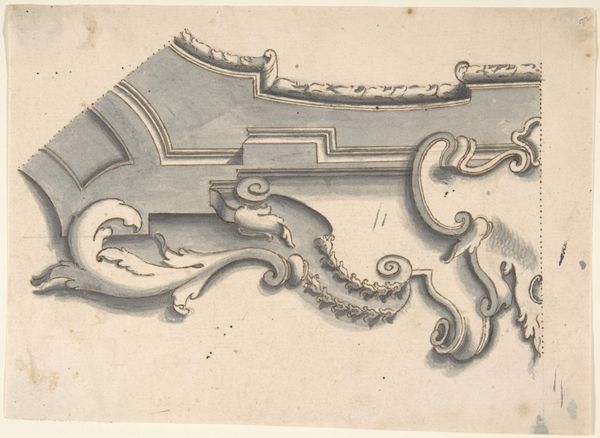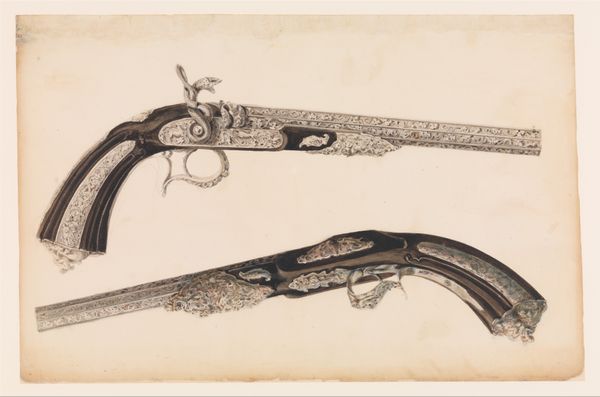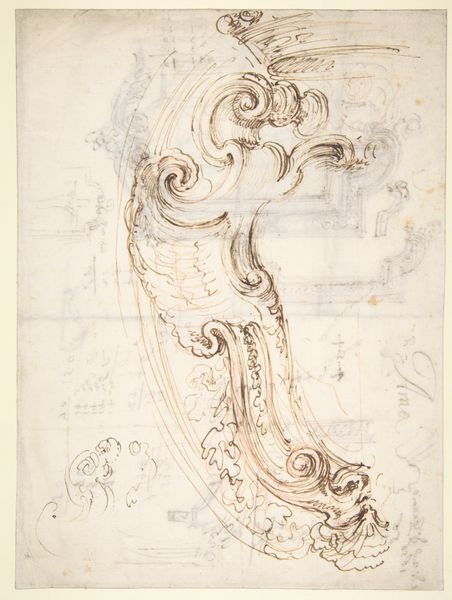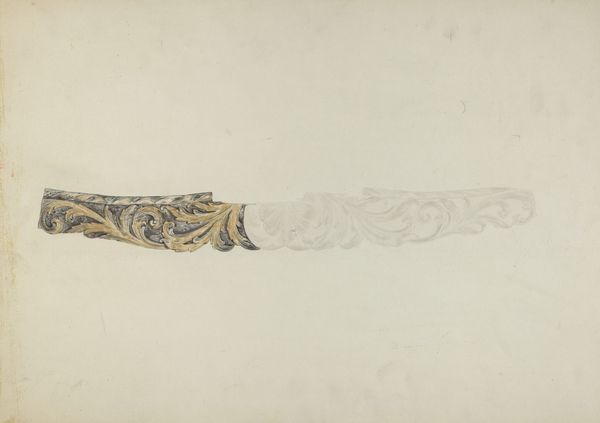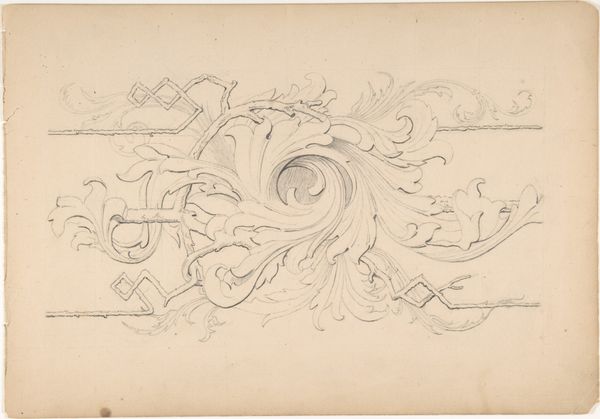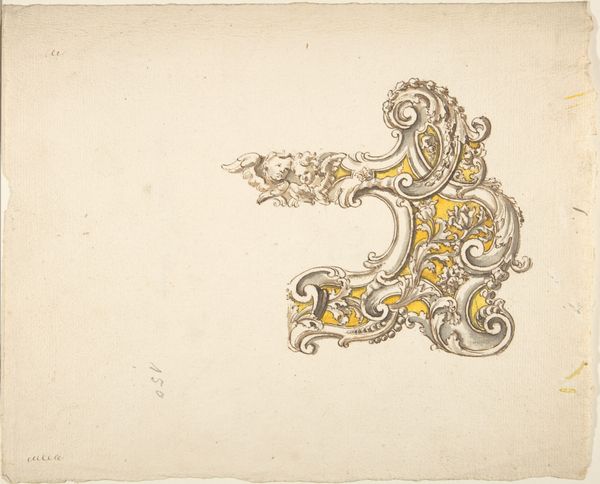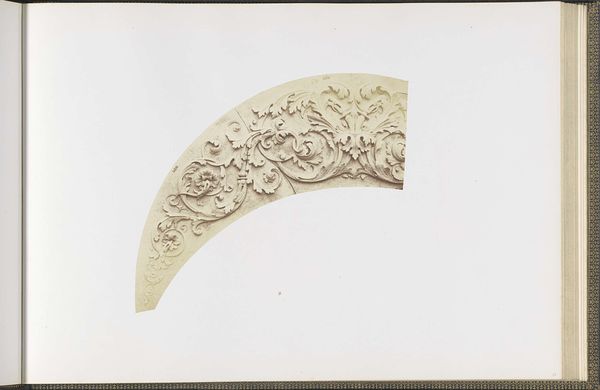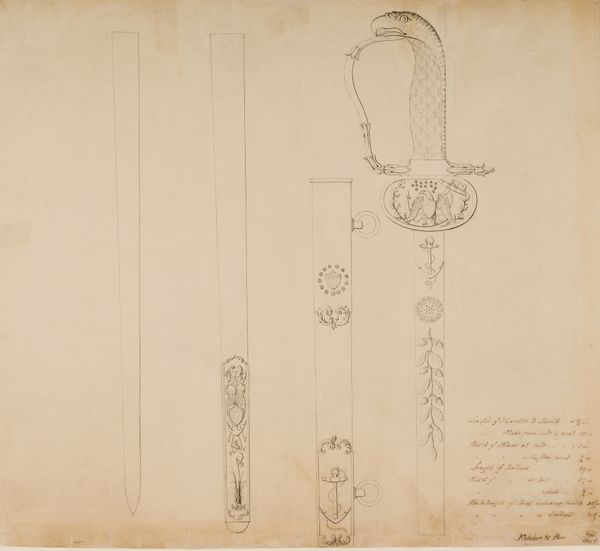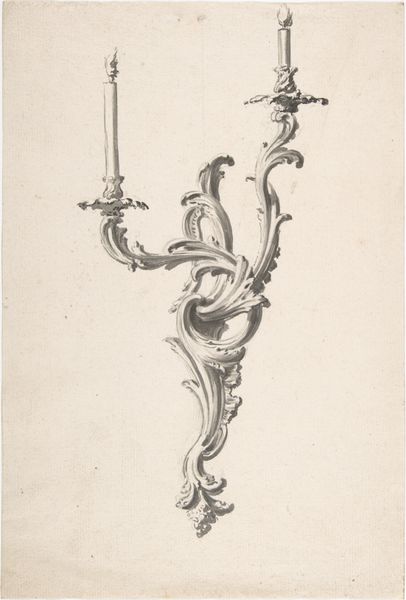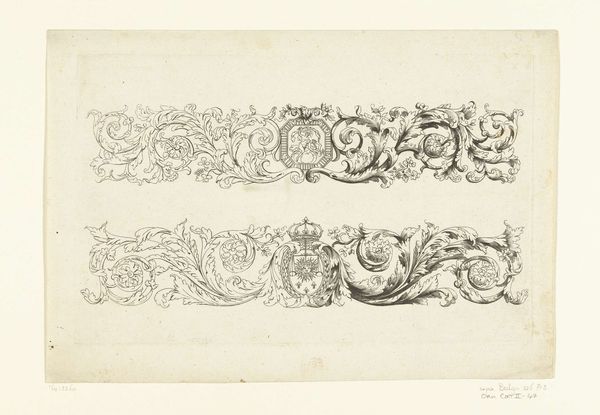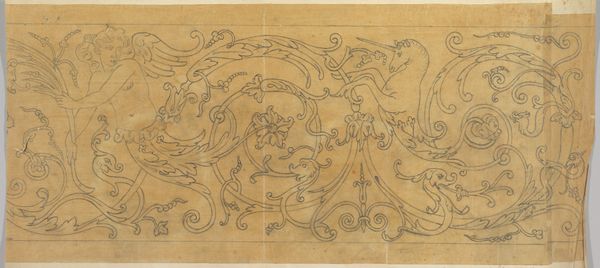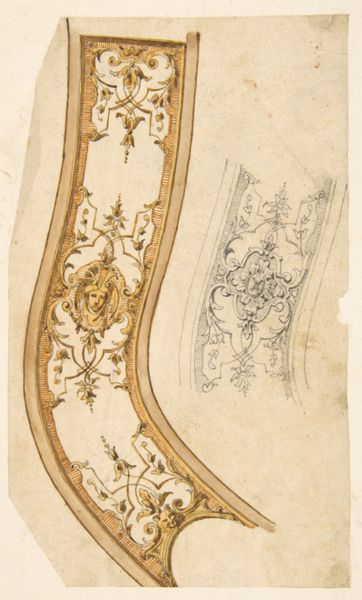
drawing, paper, watercolor, pencil
drawing
paper
watercolor
pencil drawing
pencil
history-painting
academic-art
watercolor
Dimensions 11 x 7 1/8 in. (28 x 18 cm)
Curator: This lovely study, entitled "Design for a Percussion Pistol," comes to us from around 1850. Its creator, Martin Riester, captured it on paper using watercolor and pencil. Editor: My eye is immediately drawn to the intricate ornamentation. It’s quite delicate for something associated with violence, really—almost as if weapon and sculpture were united. Curator: Riester’s decision to portray this firearm with such flamboyant decoration certainly invites questions. We must consider this in light of the increasing culture of arms production in the 19th century, particularly around status symbols for a rising merchant class. Editor: Notice how the design is meticulously rendered, and the contrast between the brown watercolor and the lighter pencil suggests the interplay of light and shadow on the metal surface. It has a textural quality despite being on a flat surface. Curator: Precisely! That's a crucial aspect. Consider this wasn't simply about function but signaling one's position. Owning such an elaborately decorated weapon became a signifier of affluence, subtly reflecting prevailing socio-economic hierarchies. This weapon reflects how industry meets artistry meets social class. Editor: It's a statement piece, really, but I can't help noticing some elements feel incomplete or hesitant. Look closely and there's something less assured compared to the trigger section, which makes me consider its intended audience; the drawing is less functional blueprint and more artful sketch, meant to impress a collector, perhaps. Curator: Indeed, and to follow this reading further, the sketch form is incredibly important when looking at displays of power in art. Guns began to move away from being crude metal forms when their role began to have increased political importance to colonial governments. Editor: So this wasn't just a technical drawing; it reflected deeper cultural currents about status and industrial prowess. This is where artistic intention intertwines with societal influence. Curator: A vital relationship that gives deeper meaning to an aesthetically pleasing drawing. Editor: Well, I approached this initial encounter seeking structural form but ultimately found myself contemplating socio-historical interpretations as well, the dialogue is indeed enriched.
Comments
No comments
Be the first to comment and join the conversation on the ultimate creative platform.
